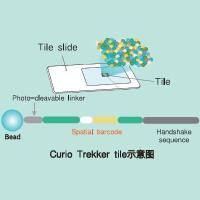Genetic Fate-Mapping Approaches: New Means to Explore the Embryonic Origins of the Cochlear Nucleus
Greatly impacting the field of neural development are new technologies for generating fate maps in mice and thus for illuminating relationships between embryonic and adult brain structures. Until now, efforts in mammalian models such as the mouse have presented challenges because their in utero development limits the access needed for traditional methods involving tracer injection or cell transplantation. But access is no longer an obstacle. It is now possible to deliver cell lineage tracers via noninvasive genetic, rather than physical, means. The hinge-pin of these new “genetic fate mapping” technologies is a class of molecule called a site-specific recombinase. The most commonly used being Cre and Flp. Through the capacity to produce precise DNA excisions, Cre or Flp can act as an on-switch, capable of transforming a silenced reporter transgene, for example, into a constitutively expressed one. A reporter transgene is, in effect, transformed by the excision event into an indelible cell-lineage tracer, marking ancestor and descendant cells. The actual cell population to be fate mapped is determined by recombinase parameters. Being genetically encoded, Cre or Flp is “delivered” to specific cells in the embryo using transgenics – promoter and enhancer elements from a gene whose expression is restricted to the desired cell type is used to drive recombinase expression. Thus, recombinase delivery is not only noninvasive but also restricted to specific embryonic cells based on their gene expression phenotype, lending molecular precision to the selection of cells for fate mapping. Resolution in cell type selection has recently been improved further by making lineage tracer activation dependent on two DNA excision events rather than just one. Here, in what is referred to as “intersectional genetic fate mapping,” lineage tracer is expressed only in those cells having undergone a Flp-dependent excision as well as a Cre-dependent excision, thus marking the embryonic cells lying at the intersection of two gene (Flp and Cre driver) expression domains. The field of hindbrain development, in particular, has seen great advances through application of these new approaches. For example, genetic fate maps of the cochlear nucleus have yielded surprising information about where in the embryonic hindbrain its constituent neurons arise and journey and what genes are expressed along the way. In this chapter, we detail materials and methods relevant to genetic fate mapping in general and intersectional genetic fate mapping in particular.
![预览]()






